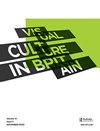Mythopoesis or Fiction as Mode of Existence: Three Case Studies from Contemporary Art
Q2 Arts and Humanities
引用次数: 2
Abstract
This article explores a trend in some British contemporary art towards ‘fictioning’, when this names not only the blurring of the reality/fiction boundary, but also, more generally, the material instantiation – or performance – of fictions within the real. It attends to three practices of this fiction as mode of existence: sequencing and nesting (Mike Nelson); the deployment ‘fabulous images’ and intercessors (Brian Catling); and more occult technologies and an idea of the ‘invented life’ (Bonnie Camplin). The article also attends to the mythopoetic or ‘world-making’ aspect of these practices and the way this can involve recourse to other times, past and future. Mythopoesis also involves a sense of collective enunciation and, with that, a concomitant disruption of the more dominant fiction of the self.作为存在方式的神话或虚构:来自当代艺术的三个案例研究
本文探讨了一些英国当代艺术走向“虚构”的趋势,这不仅是指现实/虚构边界的模糊,而且更普遍地说,是指现实中虚构的物质实例化或表现。它关注这种小说作为存在模式的三种实践:排序和嵌套(迈克·纳尔逊);部署“神话般的形象”和代祷者(布莱恩·卡特林);以及更多神秘的技术和“发明生命”的概念(邦妮·坎普林)。本文还关注这些实践的神话或“世界制造”方面,以及这可能涉及求助于其他时间,过去和未来的方式。神话也涉及到一种集体表达的感觉,随之而来的是对更主要的自我虚构的破坏。
本文章由计算机程序翻译,如有差异,请以英文原文为准。
求助全文
约1分钟内获得全文
求助全文
来源期刊

Visual Culture in Britain
Arts and Humanities-Visual Arts and Performing Arts
CiteScore
0.60
自引率
0.00%
发文量
1
 求助内容:
求助内容: 应助结果提醒方式:
应助结果提醒方式:


